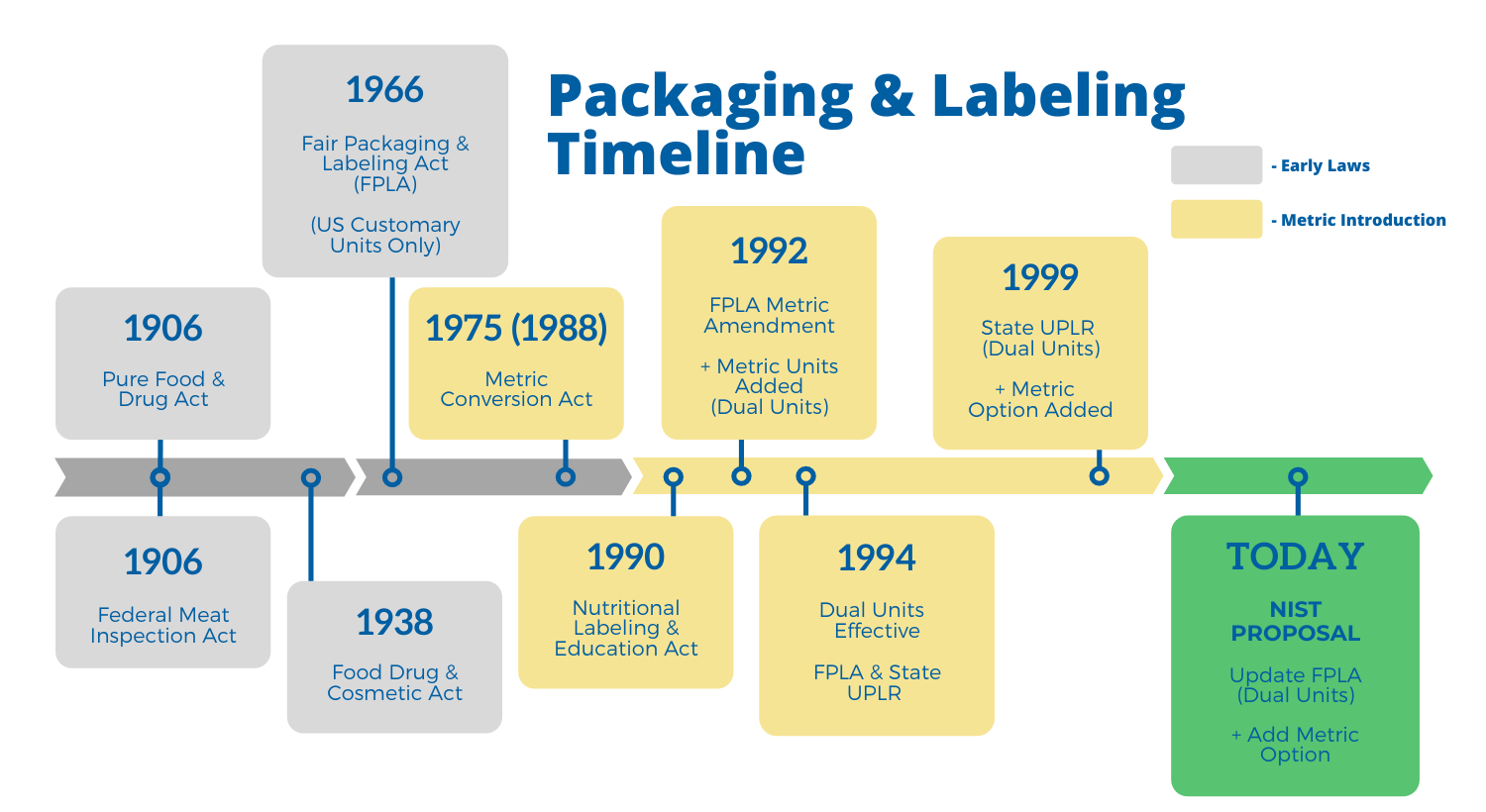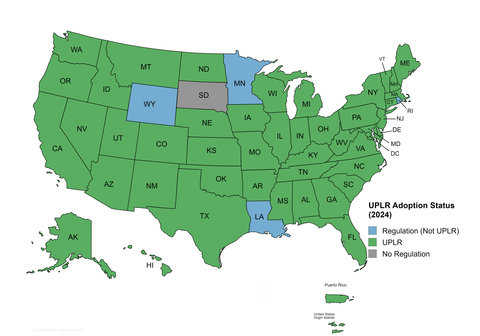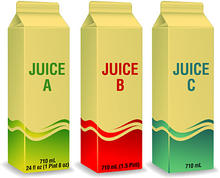Packaging and Labeling
The Fair Packaging and Labeling Act (FPLA) and other Federal laws and regulations govern the labeling requirements for most consumer products; however, many products fall only under state laws (NIST Handbook 130-Current Edition). Over the years, packaging and labeling laws and regulations have been introduced and modified to meet marketplace needs. In fact, metric units have been used on consumer packages for over 28 years. Currently scheduled Office of Weights and Measures (OWM) packaging and labeling training opportunities are listed on the Calendar of Events.

Fair Packaging and Labeling Act (FPLA)

The FPLA relates only to the net quantity of contents information on packages, goods, or commodities that are sold on the basis of weight or measure (i.e., it does not apply to such products as electronic or industrial equipment that have contents sold by the quantity of their contents and appliances).
Labeling requirements for packaged goods are applied to packages based on who will be the ultimate consumer. There are two classifications of products: "consumer" packages that are intended for sale in retail stores, such as food or department stores and "non-consumer" packages that are intended for sale in wholesale trade, such as by a manufacturer who packages 25 kg bags of chemicals for sale to another manufacturer for use in producing another product. The FPLA requirements are not applicable to all packaged goods.
The FPLA was amended in 1992 to require that metric (SI) units be displayed on packages to familiarize consumers with metric units so that they could learn to equate familiar quantities to the metric units of measure. Some manufacturers have included metric units on package labels for more than 30 years. The metric units have proven informative and have helped consumers learn to relate metric quantities to the equivalent U.S. customary unit quantities.
Uniform Packaging and Labeling Regulation (UPLR)

The National Conference on Weights and Measures (NCWM) has eliminated barriers to the use of metric units in trade and commerce in all of its model laws and regulations so that the marketplace is free to use metric (SI) units when consumers and businesses decide to change. Since January 1, 2000, the Uniform Packaging and Labeling Regulation (UPLR, NIST Handbook 130) has allowed metric net quantity declarations on consumer packages not subject to Federal regulations. The UPLR has allowed metric labeling on non-consumer packages (those packages marked for wholesale and industrial trade) for more than 20 years. The Guide for Labeling Consumer Package by Weight, Volume, Count, or Measure (NIST SP 1020) provides an overview of the requirements for labeling packaged goods to be offered for sale and is based on the UPLR.
Today, under state and local laws, all scales, gas pumps, and other weighing and measuring instruments used in trade and commerce can be calibrated to weigh or measure using the SI. Also, unit pricing for products sold by weight can be by the price per kilogram or price per 100 grams (e.g., if a product costs $7.69 per pound, its unit price in metric units would be shown as $16.95 per kilogram or $1.69 per 100 grams). The Unit Pricing Guide: a Best Practice Approach to Unit Pricing (NIST SP 1181), provides comprehensive unit pricing label guidance. Explore the Packaging and labeling Requirements FAQs for more information.
Metric Labeling in the U.S. Marketplace
In an effort to characterize current U.S. marketplace labeling practices, the net quantity of contents statement labeling of at least 1137 packages was examined in 19 retail stores, including those that sell food, home and personal care products, hobby and arts and crafts products, automotive, hardware, office products, and pet supplies. The assessment found that retailers across the United States are selling both domestically packaged and imported products labeled with only metric units in the net quantity of content statement.
Of those packages examined, 17 % declared the net quantity of contents in only metric units. Almost 57.5 % of those metric packages were found to be noncompliant with current FPLA dual labeling requirements. The majority of the parties responsible for manufacturing or distributing 61 % of the metric products were U.S. companies. Metric packages are present in the U.S. marketplace, and consumer exposure to metric packaging is growing, as demonstrated by their availability in a broad range of retail stores.
Marketplace Assessment - Metric Labeling on Packages in Retail Stores
Edition: Dec. 2009 (PDF)
Proposal to Amend the FPLA for Permissible Metric Labeling

To facilitate the expansion of exports by U.S. manufacturers, NIST recommends updating the Fair Packaging and Labeling Act (FPLA) to create a new package labeling option. The proposed FPLA amendments are designed to provide U.S. manufacturers increased flexibility when labeling their products: 1) Dual Unit label (current option) or 2) Metric label (additional option). The proposed amendments allow U.S. packers to continue using the Dual Unit option and do not apply to unit pricing, advertising, recipes, nutrition labeling, or other general pricing information or require changes in package sizes.
Expand Labeling Options to Benefit U.S. Exports: A Proposal to Amend the Federal Fair Packaging and Labeling Act (FPLA)
Edition: June 2018 (PDF)
Resources
- Reports:
- Expand Labeling Options to Benefit U.S. Exports: A Proposal to Amend the Federal Fair Packaging and Labeling Act (NIST). The current proposal to amend the FPLA for permissible metric labeling.
- Marketplace Assessment - Metric Labeling on Packages in Retail Stores (NIST). A report of the 2009 U.S. retail marketplace labeling practice analysis.
- Publications:
- Handbook (HB) 130 - Uniform Laws and Regulations in the Areas of Legal Metrology and Fuel Quality (NIST). The Uniform Packaging and Labeling Regulation (UPLR) section allows metric net quantity declarations on consumer packages not subject to Federal regulations.
- Special Publication (SP) 1020 - Labeling Consumer Package by Weight, Volume, Count, or Measure (NIST). An overview of the requirements for labeling packaged goods to be offered for sale, based on the UPLR.
- Special Publication (SP) 1181 - Unit Pricing Guide: a Best Practice Approach to Unit Pricing (NIST). A comprehensive unit pricing labeling guide.
- Other Guidance:
- FAQs - Packaging and Labeling Requirements (NIST Office of Weights and Measures)
- Packaging and Labeling Requirements FAQs
- Fair Packaging and Labeling Act (Federal Trade Commission). A collection of resources, including rule text, federal register notices, and press releases.
- European Union (EU) Metric Directive (NIST). A collection of resources related to the EU measurement unit policy.
- Connecting to Global Markets (International Trade Administration). Learn about all aspects of exporting and world markets through solutions designed to help U.S. exporters create successful international sales strategies.
- How to Export (International Trade Administration). Video collection to help small businesses prepare to export.
- Preparing Your Product for Export (International Trade Administration). Products and their packaging may need to be customized before selling in a new market. Learn more about key considerations to make your products operable, more marketable, or legally compliant in a foreign nation.
- International Import/Export Requirements (Alcohol and Tobacco Tax and Trade Bureau). Information on international import/export requirements for various countries for beer, wine, and distilled spirits.
- Requirements for Alcohol Importers (Alcohol and Tobacco Tax and Trade Bureau). Information explains the requirements you must meet to maintain your business, including approval documents.
- Alcohol and Tobacco Tax and Trade Bureau (Treasury)
- Malt Beverages
- Checklist of Mandatory Label Information. This checklist includes the mandatory information we review on every malt beverage label and certificate of label approval application. The checklist will help you prevent the most common errors.
- Wine Labeling
- Anatomy of a Wine Label Tool
- Checklist of Mandatory Label Information. This checklist lists the mandatory information we review on every wine label and certificate of label approval application. The checklist will help you prevent the most common errors.
- Distilled Spirits Labeling
- Anatomy of a Distilled Spirits Label Tool
- Checklist of Mandatory Label Information. This checklist lists the mandatory information we review on every distilled spirits label and certificate of label approval application. The checklist will help you prevent the most common errors.
- Malt Beverages
Contacts
-
Metric Program

